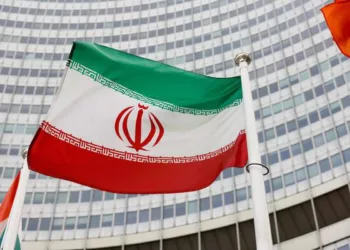Strong earthquakes that strike Japan’s western shore claim dozens of lives.
At least 48 people have died as a result of a series of strong earthquakes that struck western Japan on Tuesday, damaging thousands of homes, cars, and boats.
Authorities in certain areas have issued evacuation orders due to the possibility of more powerful earthquakes.
One day after a magnitude 7.6 earthquake struck the region on Monday afternoon, aftershocks were being felt in Ishikawa prefecture and the surrounding territories.
According to officials, thirty persons have been confirmed killed in Ishikawa. According to them, residences had damage so severe that it was not possible to evaluate it right away, and 14 more people suffered critical injuries.
Speaking on behalf of the government, Yoshimasa Hayashi stated that he was aware of the prefecture’s death toll but that 17 people had suffered serious injuries.

Some neighborhoods remained lacked electricity, water, or cellular connection, as locals lamented their wrecked houses and uncertain futures.
“The mess isn’t the only issue. There is a see through to the adjacent room because the wall has collapsed.
Ishikawa resident Miki Kobayashi declared, “I don’t think we can live here anymore,” as she swept around her home.
She said that an earthquake in 2007 had also destroyed their home.
“Saving lives is our priority and we are fighting a battle against time,” he said. “It is critical that people trapped in homes get rescued immediately.”
A quake with a preliminary magnitude of 5.6 shook the Ishikawa area as he was speaking.
Firefighters were able to bring a fire under control in Wajima city which had reddened the sky with embers and smoke.
Nuclear regulators said several nuclear plants in the region were operating normally.
A major quake and tsunami in March 2011 caused three reactors to melt and release large amounts of radiation at a nuclear plant in northeastern Japan.
Rows of toppled houses could be seen on news videos. Cars were flipped over and some wooden structures were crushed.
Muddy coastlines were left behind by tsunami waves, leaving half-sunken ships floating in harbors.
The Japan Meteorological Agency issued lower-level tsunami warnings or advisories for the northern island of Hokkaido and the remainder of the western coast of Japan’s main island, Honshu, on Monday in addition to a major tsunami warning for Ishikawa.
A few hours later, the warning was lowered, and as of early Tuesday, there were no longer any tsunami advisories in effect. In certain locations, waves up to one meter (3 feet) in height occur.
More significant earthquakes may occur in the region within the following few days, the agency warned.
People gathered in community centers, auditoriums, and schools after being forced from their homes. Although bullet trains in the area were suspended, by Tuesday afternoon most of them were back in operation. Road segments were blocked.
Rain was forecasted by weather forecasters, which increased concerns about the infrastructure and structures that were already collapsing.
The area is home to both officially recognized cultural heritage sites and tourist destinations well-known for its lacquerware and other traditional crafts.
According to a statement released by the US president, Joe Biden, his team was “ready to provide any necessary assistance for the Japanese people.”
Due to its location along the Pacific Rim, an arc of fault lines and volcanoes known as the “Ring of Fire,” Japan is frequently struck by earthquakes.
The country has had roughly one hundred aftershocks in the past day.
यह भी पढ़े : Jr. NTR: “मैं गहरे सदमे में हूँ”, एक्टर ने जापान में भूकंप के तेज झटकों के बाद भारत पहुंचे।










